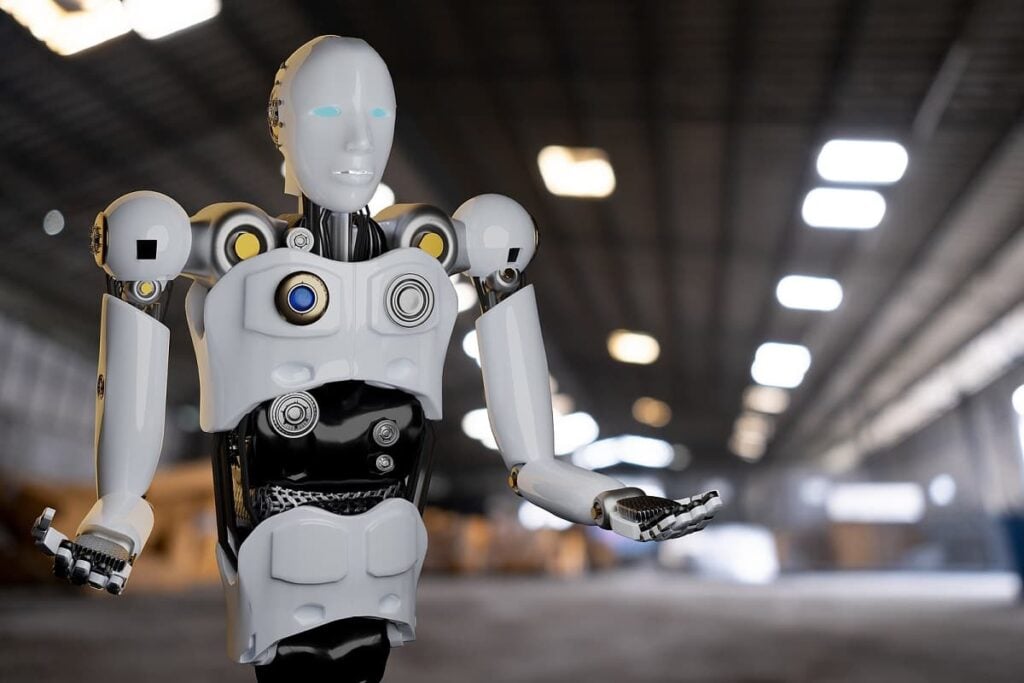Telexistence – Where Virtual Reality Meets Robotics
Table of contents

Sometimes it takes a while before a technology goes mainstream. One prerequisite is a name that conveys what the technology does while sounding good on a boardroom whiteboard. For example, the word “telexistence” seems to describe being able to exist in a particular place remotely. It’s an idea we wrote about four years ago in a piece titled “Real-Time Virtual Reality (VR) – The Ultimate Experience.”
What we described as “real-time virtual reality” is now being referred to as telexistence. Basically, it’s when a human operator uses virtual reality to control a robot from any location, provided both the human operator and robot have access to high-speed bandwidth to ensure there’s no lag that interferes with the process. (With 5G right around the corner, we’ll soon have 100X the bandwidth available than we do now.) While telexistence is now entering the public’s lexicon, it was first conceived by a Japanese fellow named Susumu Tachi back in the 80s. It’s therefore fitting that the first company to make headlines for telexistence is Japanese.
The Curious Japanese
Ironically, the same people who bundle up half the world’s people and categorize them as “Asians” find it offensive when you point out the differences between cultures – “cultural stereotyping” they call it. They’ve obviously never spent time in Japan, a place that’s so foreign to outsiders that it boggles the mind. Make no mistake, the endearing Japanese exist in their own little world, where oddities are found around every corner. Now, the world’s number one producer of industrial robots is taking on telexistence with a robot that stocks shelves.
On every corner in Japan, you’ll find a Lawson or a FamilyMart – two Japanese 7-11-type convenience store franchises – where you can get a 100-yen cup of quality coffee (about 1 USD) and peruse all types of delicious foods. Try a sausage, and you’ll get to see one of Japan’s greatest inventions in action- the dual mustard and ketchup dispenser.

In the hallowed walls of these amazing franchises may soon be found a seven-foot-tall remotely operated robot that stocks shelves – and poses for the occasional selfie because that’s how the Japanese roll.

A Startup Called Telexistence
If you’re building a startup to offer telexistence solutions, the name telexistence makes sense, especially if your Chairman happens to be the man who originally coined the term – Susumu Tachi. Founded in 2017, Japanese startup Telexistence has taken in around $2.85 million in funding from investors that include Airbus and Japanese telecom giant KDDI. The company has been in the news lately, being featured in many articles with grandiose-sounding titles such as CNN’s piece today on how “Seven-foot robots are stacking shelves in Tokyo convenience stores.” That’s only partially true. Telexistence is only in the testing phase, with plans to deploy their robots in around 20 stores by 2022. That’s a snail’s pace when you consider how massive the total addressable market is.
Today, Lawson has over 14,000 stores in Japan. It’s the number three convenience store brand after 7-Eleven (~21,000 stores), and a homegrown rival called FamilyMart (~17,000 stores). For perspective, there are only around 10,000 7-Elevens in the United States and Canada combined.
Credit: Minnesota Public Radio
As we’ve come to expect, much of the marketing collateral at Telexistence is written in Engrish, that endearing language first epitomized by the famous video game translation, “all your base are belong to us.” Here’s the general idea behind what Telexistence is working on.

Notice the use of haptics that allows the robot and human to feel the same thing. The latest robot Telexistence built – The Model T – looks much cooler than what you see above and has just three fingers on each hand. Whether or not that’s the ideal form factor remains to be seen, but it’s the notion of remotely controlling a dexterous robot that’s the appeal here.
We’re a bit lost as to why Telexistence chose a use case which involves a robot stocking shelves at 24-hour convenience stores. Perhaps a marketing stunt to generate some publicity around their robotics solutions? Maybe it doesn’t matter, because once you’ve built a robot that can stock shelves with customers milling about, the use case can be applied to almost any retail setting. Telexistence isn’t the only startup that thinks telexistence is the way forward.
Telexistence in Space
Founded in 2016, Japanese startup GITAI has raised around $5.5 million in funding to develop remote-controlled robots that will replace astronauts in commercial space stations. The company’s recently appointed COO, Yuto Nakanishi, sold his first robotics startup to Google, and now he’s focused on “bringing down the cost of space operations 100X.”
According to an article by Bridge last year, the International Space Station (ISS) costs around $19 billion a year to maintain, with Japan contributing about 10% of that number. Around half of the total costs come from training astronauts, transporting them to and from the ISS, and transporting the necessary items to maintain life on the ISS. GITAI plans to have remote-controlled robots start to perform the functions of astronauts, and a technical demonstration of their robot inside a commercial module of the ISS is launching on a SpaceX Dragon scheduled in May 2021.
While we’re only providing a few examples of telexistence startups today, there are probably many other companies out there trying to tackle similar problems, perhaps under different labels, but using the same concept. Forget about those gimmicky telepresence robots rolling around offices, we’re talking about providing people with the ability to perform physical tasks remotely using robots.
Virtual Reality or Robotics?
Technologies tend to blend together these days, like how PTC has combined augmented reality with the Internet of Things. Similarly, telexistence combines virtual reality with robotics, utilizing new technological advancements to make telexistence a reality.
- Humanoid robot
- Grasping
- Dexterity
- Mobility
- Haptics
- Virtual reality headset
- Latency (response times) = bandwidth = 5G
- Haptics-enabled controls
Investors have been placing a great deal of emphasis lately on companies that can solve the “robot grasping” problem. We take for granted how dexterous the human hand is, and many robotic solutions are reaching these limitations. Picking fruit – ripe and unripe – would be a good example of a difficult grasping problem to solve. Lately, we’ve been seeing a slew of startups getting funded that aim to make robots more dexterous so that they might be able to grab any object they come across without being trained to do so. It’s something we looked at in our past piece on How AI Can Make Smart Robots Smarter. Once robots have improved enough to perform the same physical tasks that humans can, controlling them remotely shouldn’t be that difficult once we have 5G levels of bandwidth.
Conclusion
Remote-controlled robots, avatar robots, call them what you will, it seems inevitable that we’ll soon have humanoid robots performing tasks that are being guided by humans in other locations. Any number of dangerous jobs could be supplemented by robotic workers – mining, logging, walking around in space.
As 5G heralds in an era of unlimited bandwidth, the latency problem becomes a non-issue, and the limitation lies in the dexterity of the humanoid robots being developed. Soon, telexistence – or whatever we choose to call it – may transition from an emerging technology to a disruptive one.
Sign up to our newsletter to get more of our great research delivered straight to your inbox!
Nanalyze Weekly includes useful insights written by our team of underpaid MBAs, research on new disruptive technology stocks flying under the radar, and summaries of our recent research. Always 100% free.
















